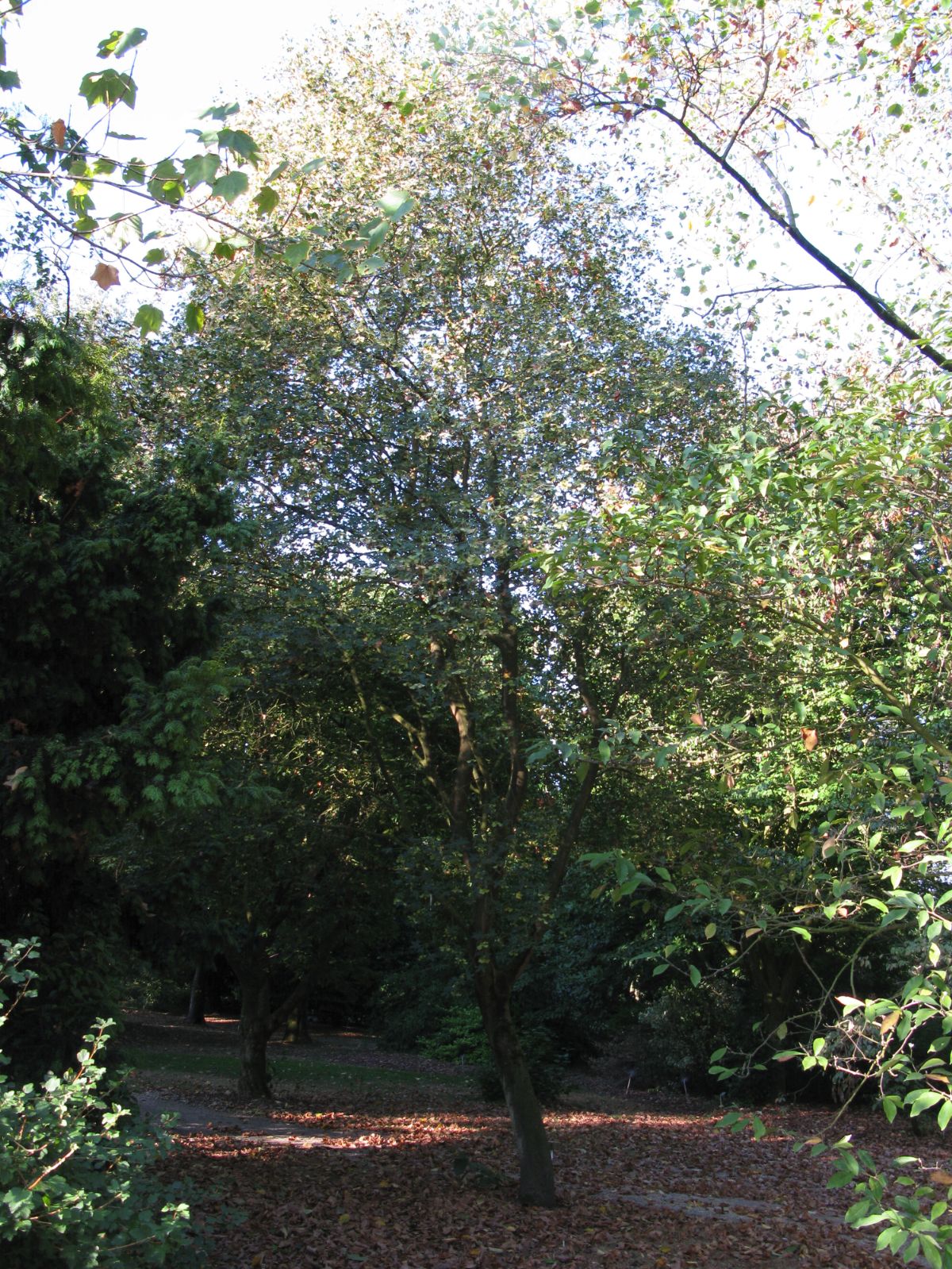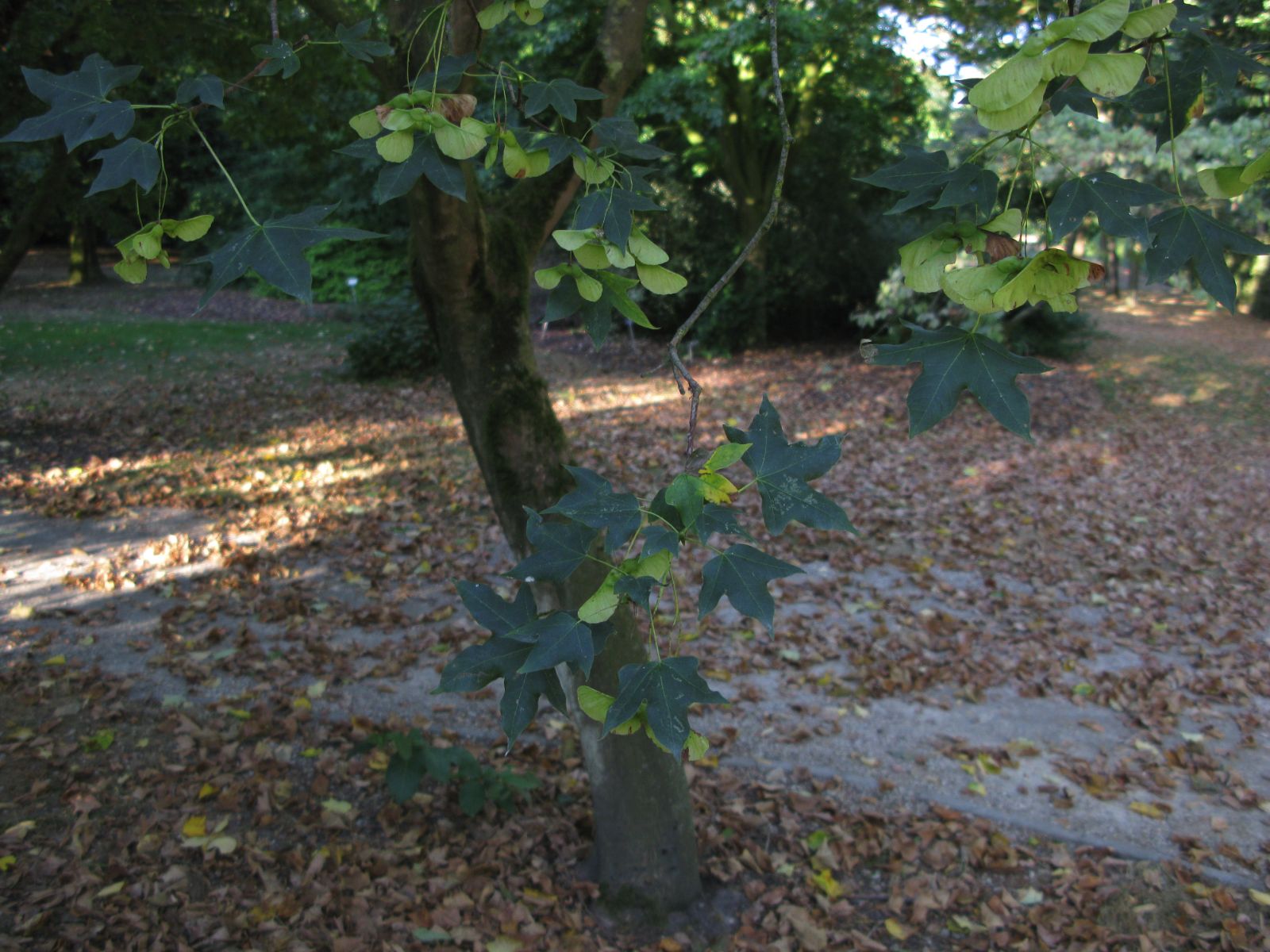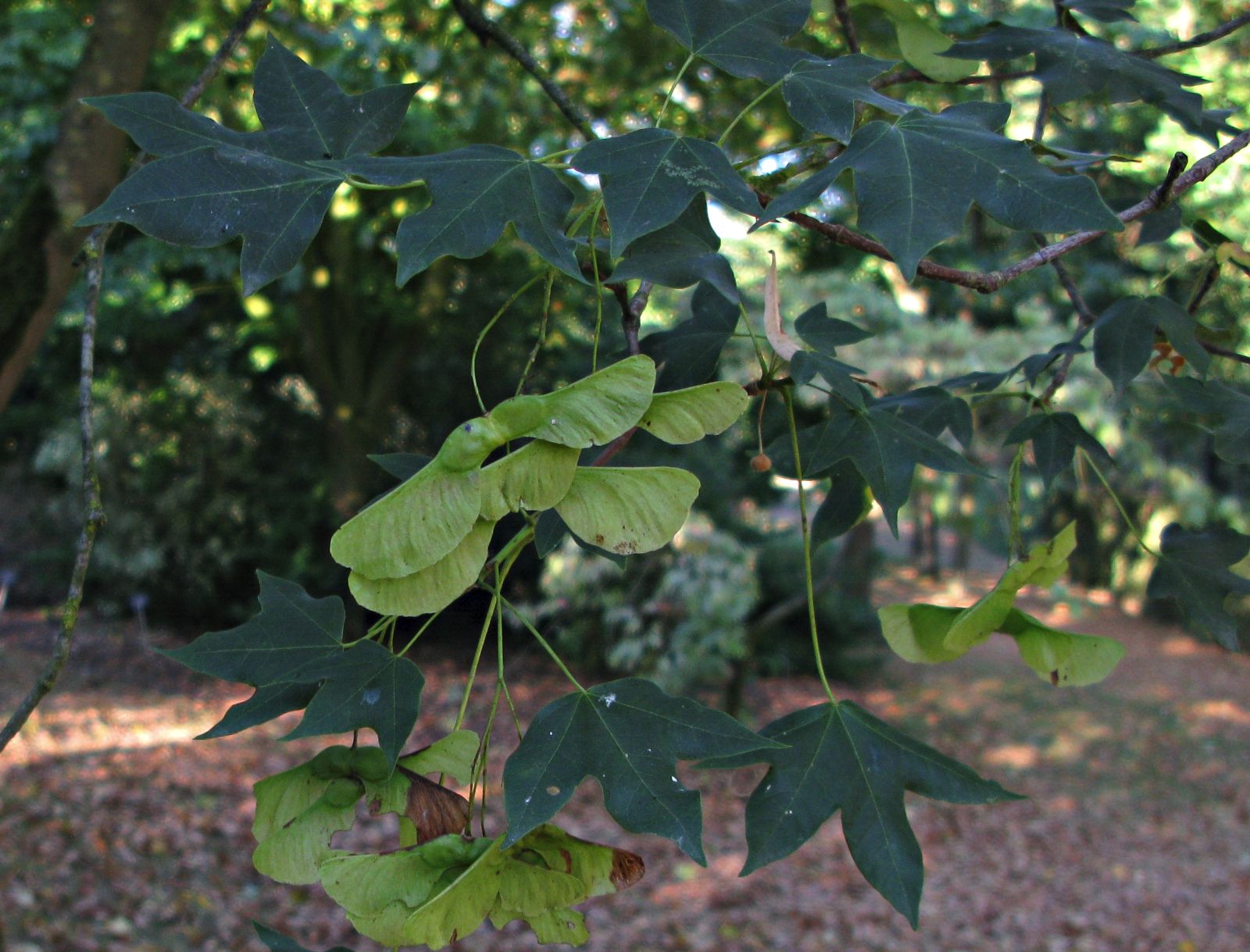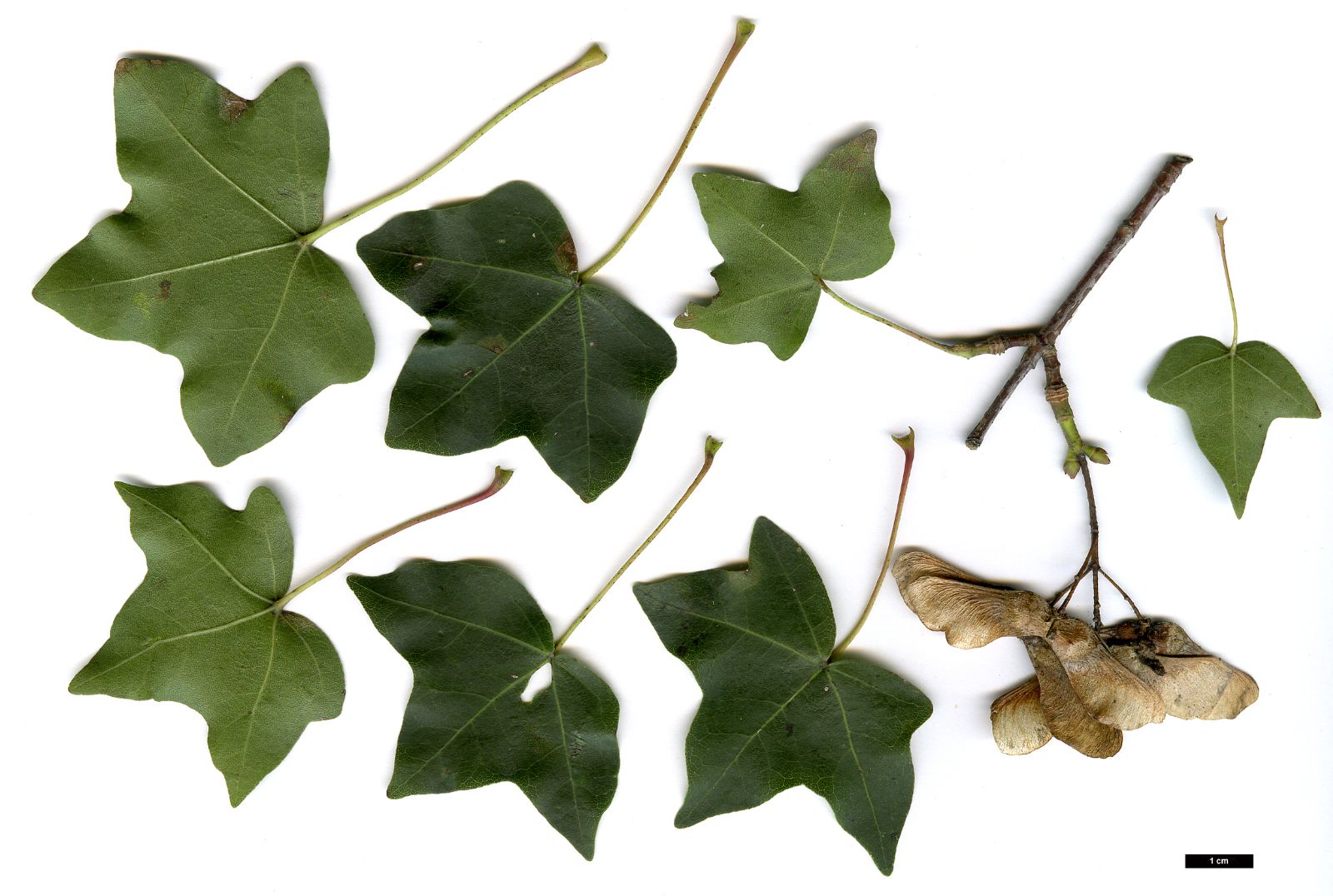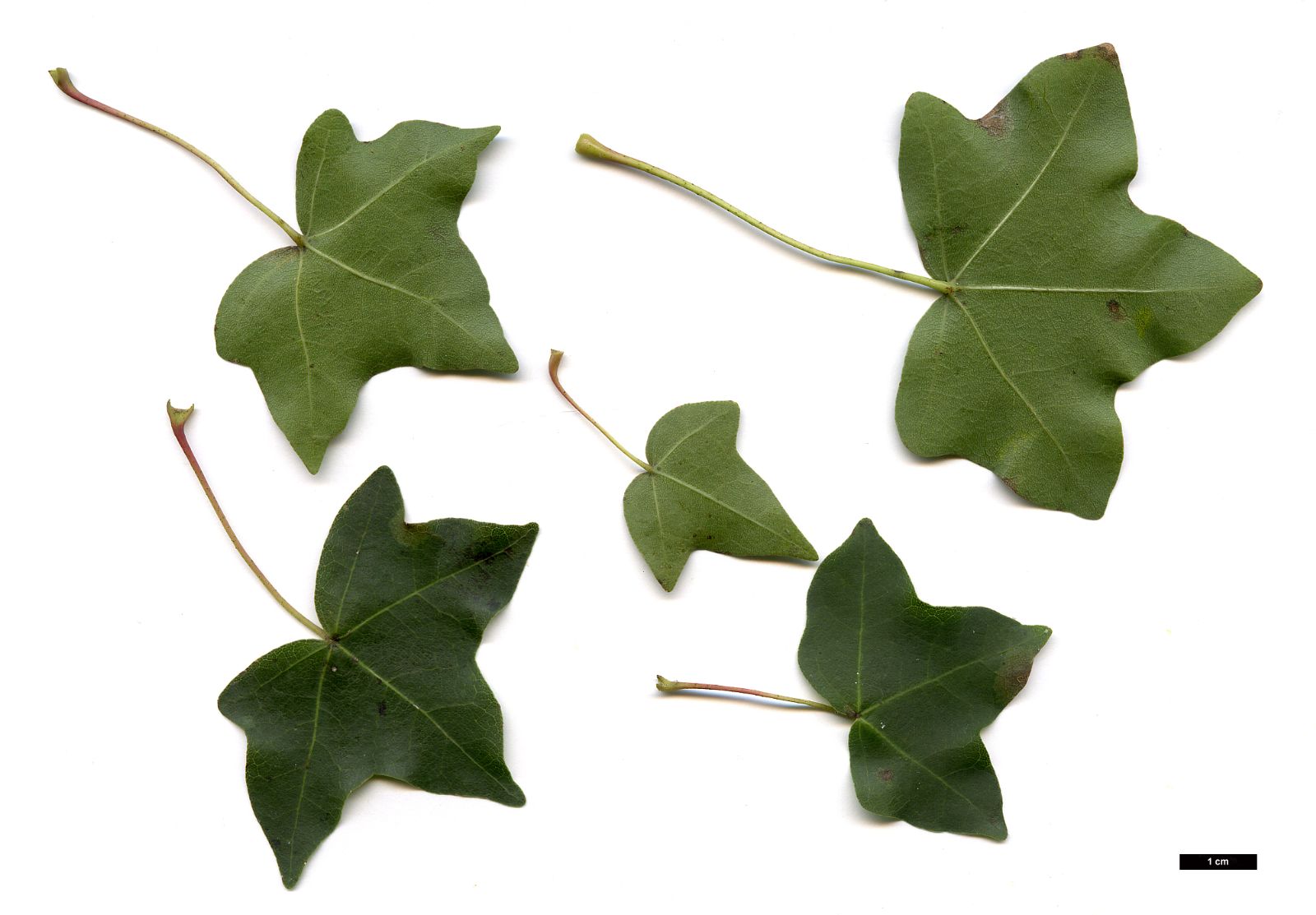Acer divergens
Sponsor
Kindly sponsored by
a member of the International Dendrology Society
Credits
Dan Crowley (2020)
Recommended citation
Crowley, D. (2020), 'Acer divergens' from the website Trees and Shrubs Online (treesandshrubsonline.
Genus
- Acer
- Sect. Platanoidea
Synonyms
- Acer cappadocicum subsp. divergens (Pax) Murray
- Acer quinquelobum sensu Koch, non Saporta
Other taxa in genus
- Acer acuminatum
- Acer amplum
- Acer argutum
- Acer barbinerve
- Acer buergerianum
- Acer caesium
- Acer calcaratum
- Acer campbellii
- Acer campestre
- Acer 'Candy Stripe'
- Acer capillipes
- Acer cappadocicum
- Acer carpinifolium
- Acer 'Cascade'
- Acer caudatum
- Acer ceriferum
- Acer chapaense
- Acer chienii
- Acer circinatum
- Acer cissifolium
- Acer × conspicuum
- Acer cordatum
- Acer coriaceifolium
- Acer × coriaceum
- Acer crataegifolium
- Acer davidii
- Acer diabolicum
- Acer distylum
- Acer duplicatoserratum
- Acer elegantulum
- Acer erianthum
- Acer 'Esk Flamingo'
- Acer fargesii
- Acer fenzelianum
- Acer flabellatum
- Acer forrestii
- Acer franchetii
- Acer × freemanii
- Acer fulvescens
- Acer 'Gimborn'
- Acer ginnala
- Acer glabrum
- Acer 'Gold Coin'
- Acer granatense
- Acer grandidentatum
- Acer griseum
- Acer heldreichii
- Acer henryi
- Acer × hillieri
- Acer hookeri
- Acer hyrcanum
- Acer japonicum
- Acer kawakamii
- Acer komarovii
- Acer laevigatum
- Acer laurinum
- Acer laxiflorum
- Acer lobelii
- Acer longipes
- Acer macrophyllum
- Acer mandshuricum
- Acer maximowiczianum
- Acer maximowiczii
- Acer metcalfii
- Acer miaotaiense
- Acer micranthum
- Acer 'Mindavi'
- Acer 'Minorient'
- Acer miyabei
- Acer miyabei × campestre
- Acer monspessulanum
- Acer morifolium
- Acer 'Mozart'
- Acer oblongum
- Acer obtusifolium
- Acer okamotoanum
- Acer oliverianum
- Acer opalus
- Acer orientale
- Acer palmatum
- Acer papilio
- Acer pauciflorum
- Acer pectinatum
- Acer pensylvanicum
- Acer pentaphyllum
- Acer pentapotamicum
- Acer pictum
- Acer pilosum
- Acer pinnatinervium
- Acer platanoides
- Acer platanoides × amplum
- Acer platanoides × truncatum
- Acer × pseudoheldreichii
- Acer pseudoplatanus
- Acer pseudosieboldianum
- Acer pubinerve
- Acer pycnanthum
- Acer rubescens
- Acer rubrum
- Acer rufinerve
- Acer saccharinum
- Acer saccharum
- Acer sempervirens
- Acer 'Serpentine'
- Acer serrulatum
- Acer shenkanense
- Acer sieboldianum
- Acer sikkimense
- Acer 'Silver Cardinal'
- Acer 'Silver Ghost'
- Acer sinense
- Acer sinopurpurascens
- Acer spicatum
- Acer stachyophyllum
- Acer taronense
- Acer tataricum
- Acer tegmentosum
- Acer tenellum
- Acer tetramerum
- Acer tibetense
- Acer tonkinense
- Acer triflorum
- Acer truncatum
- Acer tschonoskii
- Acer turkestanicum
- Acer tutcheri
- Acer ukurunduense
- Acer velutinum
- Acer wardii
- Acer 'White Tigress'
- Acer wilsonii
- Acer × zoeschense
A deciduous shrub or tree to 10 m in the wild. Bark pale brown to yellowish-grey. Branchlets glabrous, turning grey to brown and woody by the end of the first year. Buds ovoid, usually with 6 pairs of imbricate scales. Leaves broadly pentagonal in outline, base subcordate to truncate, 3– to 5-lobed, 2–3.5 × 3–5 (–8) cm, margins entire, lobes triangular to ovate, apically obtuse, upper surface mid-green, lower surface pale green; petiole 2–3 cm long, slender, glabrous, exuding milky sap when broken; autumn colour yellow. Inflorescence, corymbose, erect, glabrous, few flowered. Flowers yellowish-green, 5-merous, usually andromonoecious. Samaras 1.2–2.2 cm long, wings spreading nearly horizontally; nutlets flattened. Flowering from April to May, appearing with unfolding leaves, fruiting from September to October. (Yaltirik 1967; van Gelderen et al. 1994; le Hardÿ de Beaulieu 2003).
Distribution Turkey Artvin, Erzurum
Habitat Dry and sunny slopes along watercourses between 400 and 1500 m asl.
USDA Hardiness Zone 5-6
RHS Hardiness Rating H6
Conservation status Vulnerable (VU)
Taxonomic note This species is treated as a subsp. of Acer cappadocicum by van Gelderen et al. (1994). The treatment at specific rank follows Yaltirik (1967), who also includes two varieties within it, the nominate variety, with 5-lobed leaves with truncate bases, and var. trilobum Yalt, with 3-lobed leaves with rounded bases. It is part of the A. cappadocicum complex, along with that species (including subsp. sinicum), A. lobelii and A. shenkanense.
The rarest member of the Acer cappadocicum complex in cultivation, A. divergens was introduced to Kew in 1923 Bean (1976), remaining largely restricted to specialist collections ever since. Morphologically it appears quite distinct from A. cappadocicum and other members of the complex, possessing far smaller leaves and, significantly, branchlets that turn brown and woody by the end of the first year’s growth. In this respect it appears more allied to A. pictum than to A. cappadocicum, though its relationship to A. campestre should also be investigated. As noted elsewhere, a comprehensive molecular study on the section is required. Endemic to northeastern Turkey, its range does overlap with that of Acer cappadocicum subsp. cappadocicum, and though van Gelderen et al. (1994) suggest that the two merge at their extremes, hybridisation in the wild is not reported by authors of the Turkish flora.
In cultivation, as in the wild, the species takes a multistemmed form. Single-stemmed trees with untypically large leaves grown in collections should be observed with scepticism, as hybridisation with any number of its relatives in the section is quite possible. Known origin material in cultivation is somewhat scarce, though wild origin plants, fitting the typical variety, grow at Chelsea Physic Garden and Howick Hall. Perhaps unsurprisingly, the species appears happier in the Chelsea climate than in Northumberland. Plants of var. trilobum have not been observed in collections.

